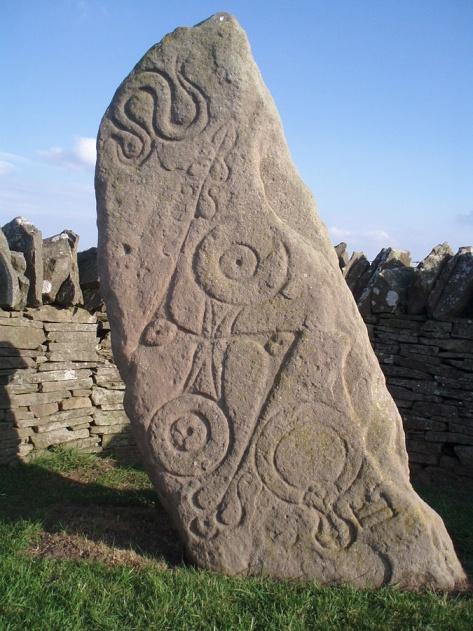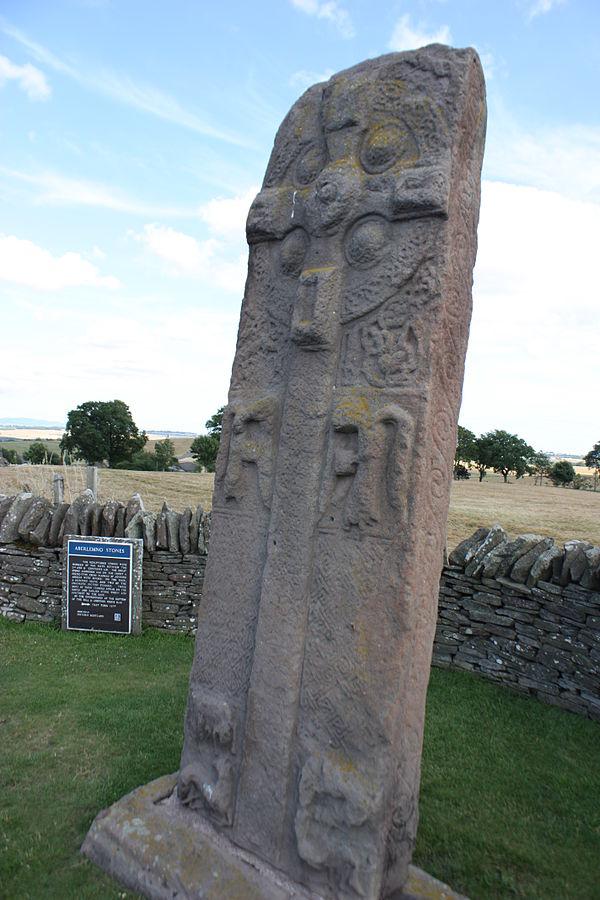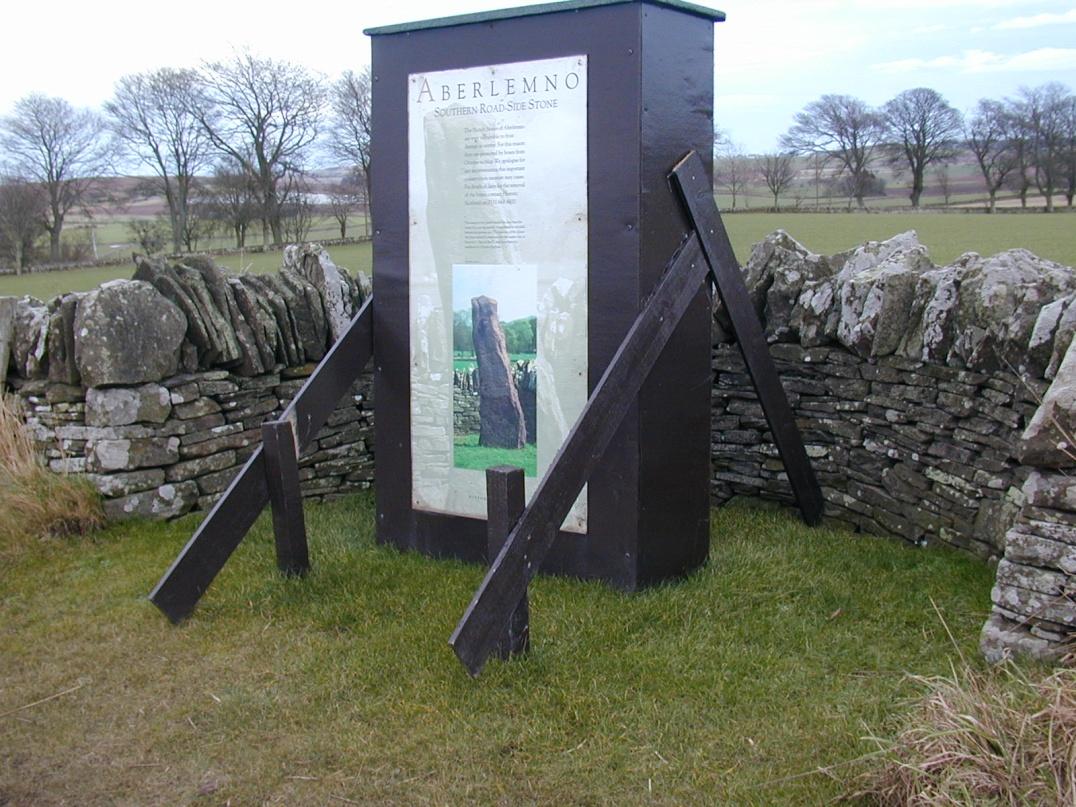|
OFF THE BEATEN PATHABERLEMNOIf you are fond of Picts, it behooves you to take a trip along the the B9134 (the Forfar-Brechin Road) to Aberlemno. This small village in the Scottish council area of Angus is noteworthy for three large carved Pictish stones along with a fragment of a fourth. They are dated as having come from the 7th and 8th centuries AD Two stones and the fragment can be found by the B9134 (the Forfar-Brechin road which runs into Dundee, Brechin is not far from Montrose.) A third stone, known as the Kirkyard Stone can be found in the nearby graveyard of the parish church. Although the stone shows a good deal or erosion, there are indications of a curving symbol. Initially it was located in a field behind the place it now stands. No one is quite sure what purpose the stones served, but not far away is the fort of Finavon which some think may have been home to a Pictish chieftan Aberlemno Northern Roadside Stone There are several Pictish symbols on this stone. Among them can be found a serpent, a double disc and z-rod and a mirror and comb. No definitive interpretation has been found for these symbols. The stone was found in the field behind and, judging from prehistoric cup marks on its back, seems to have been an earlier monument reused by the Picts.  Serpent stone Both sides of this stone are carved. On one side there is a rather cross with angels on either side. There is a hunting scene with Pictish symbols: a crescent, a V-rod, a Z-rod and a double disc. There is also a picture representing King David fighting the lion. This stone clearly shows Christian images lacking on the other stones. Churchyard Cross Slab This remarkable stone is an exceptionally fine bit of Pictish carving. A beautifully carved appears with different animals on it. The opposite side (which faces the church) shows a battle scene. Long haired men (Picts), battle victoriously with whose in helmets (Anglian). Some feel that this may have been made about the Battle of Nechtansmere (an uncertain locations, perhaps near Dunnichen) which occurred in 685 AD, King Ecgfrith of Northumbria was slain in the battle and this effectively ended Anglian possession of the south of Pictland.  Ecosse  During the warmer months of spring, summer and fall, the stones can be seen. From the last working Day in September until the 1st Day of April, the stones are protected by wooden coverings so as to prevent and damage to the stones by frost. A video of the stones can be found at Sculptured Stones, Aberlemno |

